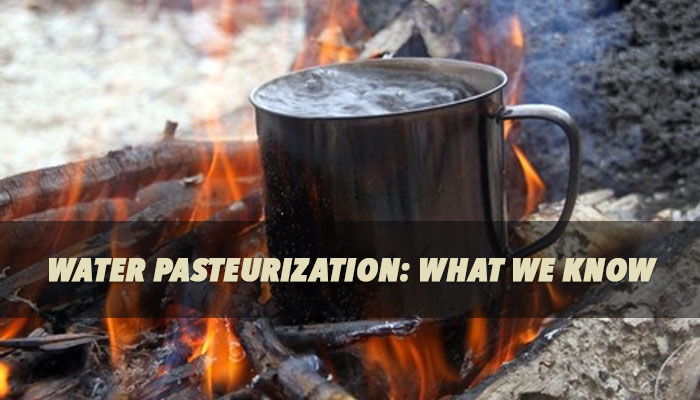
We here have written extensively on water purification methods, and one method bears writing about again, because it is an important method that some of you may not be as familiar with as you should be.
Certain survival shows have shown water pasteurization, and for the most part, have depicted the method correctly. With that being said however, the shows typically have the stars using plastic bottles or even snake skins that are placed close to the heat, so as not to melt the container (s). There is a better method though.
The traditional and mostly foolproof method of water purification is rapid boiling of water for at least one minute at sea level. At sea level water boils at 212° F, and at higher elevations, it boils at lesser temperatures because of the reduction in air pressure, and thus, would have to boil longer.
If biological contaminates are destroyed at a high temperature when exposed for one minute, will then exposing contaminates to lower temperatures for longer periods achieve the same results? The answer is yes. Well, this begs the question then, how do you know when it has been long enough. One way to know is by using a Water Pasteurization Indicator (WAPI).
A WAPI is a clear polycarbonate tube partially filled with a soybean wax, which melts at about 158° F (70°C). The WAPI tube is placed in the water being heated. If the WAPI wax melts and falls to the bottom of the tube, it indicates that pasteurization conditions have been reached.
A WAPI is available in various places such as on Amazon and other websites that deal in survival supplies. Where you pick up one is not important. The important thing is that it does work. The wax only melts at a certain temperature. The water is heated long enough at a lower temperature to destroy the harmful microbes, and the melting process is a slow one so you know the water has been heated long enough at the lower temperatures to ensure safe drinking water.
Once The Wax Has Cooled and Solidified the WAPI Can Be Used Again
This means that you can use a solar oven or some other means to pasteurize your water and know when the process is complete. Before pasteurizing, however, filter well, because debris floating in the water can have a negative effect on the process or at the very least let the debris settle before beginning.
Bringing water to a boil uses more fuel and reduces the water volume. Steam rising from the boiling water is lost water, and you can literally boil a pot dry and lose all of your water, not to mention the fuel used to boil the water has been wasted, as well. Pasteurization is an alternative, however, but it is not a foolproof alternative unless you know what the temperature of the water is.
Keep in mind when talking about the pasteurization of water to make it safe to drink only refers to biologically contaminated water. Water that has chemicals and other toxins in it cannot be made safe to drink through the pasteurization process.
Below is a chart that shows at which temperatures certain biological contaminates are destroyed.

Water placed in a glass or clear plastic container that is surrounded by reflective material is one way of pasteurizing water. You can cover the glass in black paint or black paper to enhance the process. Again, using a solar oven is ideal if the oven is such that you can place a container so it is heated using the reflective shields on the oven. Before buying a solar oven ensure you can pasteurize water if needed.
As with anything, having a backup plan is important. Carry water purification tablets or drops in your survival pack. Have a sturdy metal container to boil water in and carry filtering materials and always have more than one means to create a fire in any environment.
https://www.ncbi.nlm.nih.gov/pmc/articles/PMC91110/